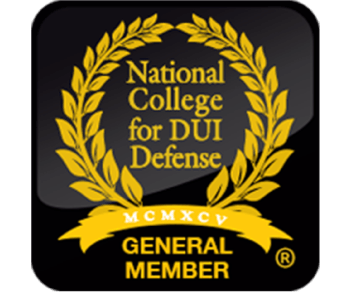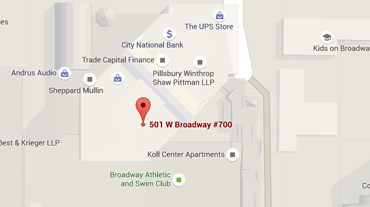Emergency responders need unrestricted access to disaster zones for public safety and operations following critical incidents. Entering a restricted emergency zone without authorization, whether deliberate or not, will result in serious charges of unauthorized entry into a closed emergency area. A conviction for unauthorized entry into a closed emergency area results in severe penalties, including heavy fines, a criminal record, and possible imprisonment that affects your future opportunities and reputation.
Find a lawyer experienced in defending emergency zone violation cases to protect your rights and build an effective defense. Time becomes essential for anyone who faces allegations of entering a closed emergency area without authorization. If you are in the San Diego area, get in touch with us at the Law Offices of Anna R. Yum for prompt legal help.
Free Consultation (619) 233-4433
What is a “Closed Emergency Area” Under California Law?
A “closed emergency area” is a designated area where authorities limit access during declared emergencies. Public safety remains the primary reason behind these restrictions, while emergency response operations require prohibiting unauthorized access.
PC 409.5 states that these designated areas emerge during emergencies that substantially threaten human safety and property preservation. The entry is restricted to authorized emergency responders and residents with particular authorization. Some of the situations that create this substantial threat include:
- Earthquakes
- Wildfires
- Floods
- Hazardous material spill
The sheriff and the city police chief usually start the process for the closure of emergency areas during an incident. A closed emergency area is established through local emergency proclamations based on Government Code 8558 or a state of emergency declared by the governor under Government Code 8625. The assessment of emergency scope begins with local officials, including sheriffs and city authorities, who issue required declarations to initiate the process. The Governor’s Office of Emergency Services (Cal OES) steers state involvement in crises that exceed the capabilities of local authorities.
The law demands that visible signs, physical barriers, and law enforcement presence at access points mark restricted areas. The public receives official notices using:
- Wireless Emergency Alerts (WEA) for immediate mobile notifications
- The Emergency Alert System (EAS) via radio and television broadcasts
- Local news broadcasts and press conference statements
- Social media platforms
- Cal OES websites and hotlines for ongoing updates
Restricted areas remain standard procedure for emergencies. They were instrumental in the following scenarios:
- The 2015 Aliso Canyon gas leak demanded that authorities implement restricted perimeters due to hazardous material leaks.
- Managing evacuations during the 2020 LNU Lightning Complex fires in Napa and Sonoma counties.
- Certain areas became closed to prevent entry to unstable structures during the 2019 Ridgecrest earthquake.
- In Santa Cruz County during the 2023 atmospheric river events, flooding created areas where people were prevented from entering.
The roles of authorities in managing these areas are established through defined procedures. Sheriff’s departments and fire districts are the first responders to develop area closures. State emergency responses are executed through Cal OES and the California Highway Patrol (CHP) during extensive crises. The incident command system starts at local levels before reaching state agencies, while state-level declarations need authorization from the governor. The enforcement of restricted areas happens through active management of entry points as officials maintain the authority to issue penalties for rulebreakers.
A state of emergency allows restricted access through Government Code 8558 because this law defines emergencies as conditions of disaster or extreme peril. Under PC 409.5, law enforcement has the authority to close areas, and the law makes unauthorized entry into restricted areas a punishable offense. The authority to handle resources efficiently comes through local and state emergencies that provide more funds and enable mutual assistance between local jurisdictions. The two declarations give officials the authority to define restricted areas that law enforcement officers and National Guard personnel can enforce.
The public receives emergency alerts through various communication channels because effective communication remains essential. These measures may still encounter difficulties. For example:
- The 2018 campfire in Paradise enforced substantial restricted zones for evacuation control and theft prevention, but encountered public confusion over the boundary lines
- The 2021 Dixie Fire experienced challenges when officials struggled to manage residents who tried to return before authorization because it depleted the available enforcement personnel.
According to these instances, adequate signage combined with constant communication proves essential for achieving public compliance.
Unauthorized Entry into Closed Emergency Area Under California Law
Penal Code 409.5 provides essential legal authority for emergency public safety management by making it illegal to enter areas that authorities have officially closed. The law is a basic requirement to enable emergency response teams to function properly while protecting people from upcoming dangers. The law establishes a criminal penalty for people who enter restricted emergency areas when they know about the prohibition and do not possess the required permission.
If you are charged with unauthorized entry into a closed emergency area, the prosecution is responsible for proving beyond a doubt that you violated PC 409.5.
The prosecution needs to prove each of the following elements:
There Was An Emergency
The state must demonstrate that there was an emergency. Prosecution must present evidence showing a declared state, local emergency, or dangerous situation requiring closure affecting the geographic area where you allegedly entered. The evidence should go beyond demonstrating the perilous circumstances during the period in question. The prosecution needs evidence showing that authorized governmental bodies made official emergency declarations under Government Code 8558 while specifying the basis of the emergency declaration, for example, flood, storm, fire, earthquake, an accident, or other dangerous conditions that endanger public health or safety.
Alternatively, the state can substantiate its case by presenting expert testimony about severe immediate dangers found at the entry point, such as:
- Active wildfires
- Property at risk of flooding from levee failures
- Post-quake building collapses
The evidence should demonstrate beyond doubt that the restricted zone corresponds to an emergency that needs public restriction, which is officially declared or is objectively dangerous.
Proper Designation and Marking
The area under investigation must demonstrate proper markings that indicate it remains restricted to unauthorized personnel. Penal Code 409.5(c) specifies that the restricted area designation must be easy for everyone to understand.
The emergency closure is made clear by visible warning signs and physical obstacles like:
- Barricades
- Ropes and police tapes
- Through the direct presence of authorized personnel controlling access points and delivering the access restrictions
The prosecution must present evidence about the emergency closure through photographic or video documentation of the scene, combined with official records and credible testimony from officials or witnesses who witnessed the established markers and closure methods.
The prosecution should show how the defined closed zone boundaries were properly marked to alert the public about the restriction.
Your Knowledge that the Area Was a Closed Emergency Area
The prosecution should demonstrate that you knew about the emergency closure and restricted entry, or a reasonable person would have recognized the area as off-limits. Your awareness of the area restrictions establishes criminal responsibility.
However, your mere physical presence alone does not suffice. Constructive knowledge becomes a key factor to prove that you should have understood the area was off-limits.
The court can evaluate knowledge through witness statements about visible warning signs from the direction of your approach, public media alerts about the emergency and closure, and reports of you ignoring warnings from emergency personnel. The prosecution must demonstrate actual knowledge or prove that ignorance of the closure would be unreasonable under the given circumstances.
Intentional Entry
The criminal charges require proof that you deliberately crossed into the forbidden zone. A deliberate entry defines this offense because unintentional boundary crossings do not qualify. If the entry occurred because of poorly marked boundaries, moved barriers, or unclear border indications, the prosecution faces difficulty proving intentional entry.
Evidence would examine how you approached the restricted zone by checking for physical barrier movement, official warnings, and verbal instructions. The prosecutors must establish that you entered an area that displayed obvious and clear restrictions through its markings. Moreover, they must show that you intentionally entered the restricted area and that your actions were not unintentional consequences of unclear conditions.
Lack of Authorization
Your entry requires proof of operating without legal permission. Penal Code 409.5 is not an absolute prohibition on entering closed emergency areas. It specifically targets those who lack legal permission to be there. Authorized individuals typically include emergency response personnel actively engaged in managing the incident, such as:
- Law enforcement officers
- Firefighters
- Paramedics
- Utility workers
- Individuals granted specific official permission by the authorities overseeing the emergency.
- Residents or property owners — They must be within the evacuated or restricted zone under specific, often controlled, conditions. This usually requires identification and adherence to safety protocols.
The prosecution must verify that you did not fall into these authorized categories at entry. This could involve:
- Checking affiliations with emergency services
- Confirming residency within the affected zone
- Verifying with the incident command whether any specific access was granted to you
The prosecution must present evidence that your presence in the closed area was, in fact, without lawful justification according to the statute and the specific directives for the emergency.
Penalties for Unauthorized Entry into Closed Emergency Area
Entering a closed crisis emergency area when it is closed is a misdemeanor punishable with severe consequences. These include:
- Fines of up to $1,000
- Jail time of up to six months
The court could issue probation terms for you to serve as punishment instead of jail time.
A criminal record has an adverse impact. Employment prospects suffer because most industries maintain policies against hiring candidates with criminal convictions. Furthermore, you will also experience challenges with housing. The competitive rental market leads landlords to decline housing applications of people with criminal backgrounds. Eligible residents can access free assistance through the San Diego Public Defender’s Clean Slate Program clinics to help with expungement procedures, which reduce these negative impacts.
The penalties for violating PC 409.5 become more severe when unauthorized entry disrupts vital emergency operations like firefighting and evacuation procedures. The potential delay of Cal Fire operations is a factor that judges use to determine maximum fines and jail sentences.
Professionals who possess state licenses, including nurses or contractors, will face extra disciplinary measures because of their license status. State licensing boards review cases after conviction when unprofessional conduct is involved. State-licensed professionals must disclose their convictions to authorities because non-disclosure will lead to investigation and denial of their professional license. Depending on their assessment, the board could impose disciplinary actions, including license suspension or revocation.
Expunging an Unauthorized Entry into a Closed Emergency Area Record
Misdemeanor convictions for unauthorized entry into a closed emergency area (Penal Code 409.5) impose fewer penalties than felonies but still generate substantial barriers to the offender. Employment opportunities and housing stability serve as major obstacles for people who have made one mistake. The state offers people a way to reduce these damaging effects through its expungement process.
The expungement process described in Penal Code section 1203.4 enables you to petition for case reopening, which allows the courts to vacate your conviction. You can request an expungement after finishing probation requirements or serving your sentence when you maintain a clean criminal record throughout this period. The court expungement process demands that you file a petition, while court procedures and effective presentation of your case often need attorney assistance.
An expunged criminal record provides the most crucial advantage because it eliminates the weight of past criminal history, allowing you to advance in life. Following court approval, the conviction will be withdrawn and the case dismissed. Your application for most private employment positions lets you declare honestly that you were not convicted.
The concern about employment and housing access is resolved through expungement since it eliminates a significant impediment to you and job opportunities and housing options. An expunged record allows most potential employers and landlords to overlook previous misdemeanor convictions, thereby making employment opportunities available that previously seemed closed. An expungement cannot eliminate criminal records for all situations, but it significantly improves access to everyday life possibilities.
It is crucial to distinguish record sealing from expungement, which is a rare option. Record sealing functions primarily for two specific reasons:
- When an arrest did not result in a conviction
- For juvenile court cases that restrict public access to records
The standard legal remedy for expunging an unauthorized entry into a closed emergency area conviction record after probation or sentencing includes standard adult misdemeanor convictions, and it provides accessibility to the practical benefits required to overcome the primary consequences affecting employment and housing stability.
Defenses You Can Use to Fight the Unauthorized Entry into Closed Emergency Area Charges
A Penal Code 409.5 charge can be daunting. The prosecution must prove every aspect of the crime beyond a reasonable doubt, which offers various defense opportunities. Various possible defenses that you can use in your case include:
Lack of Willful and Knowing Entry
Defending against false allegations requires you to dispute that you deliberately entered restricted emergency zones. The legal requirement demands knowledge of the area’s closure for emergency purposes and purposeful entry. If evidence shows unclear posting or confusing conditions during the emergency, you could prove a lack of understanding or deliberate choice.
For example, if you entered when the signs were missing or barricades were relocated or wandered into the area, your entry will not be willful, nor will it constitute knowing.
Improper Designation and Marking of the Area
Establishing a valid defense is important to demonstrate that the area lacked proper legal closure indicators. PC 409.5 demands that public closure information be noticeable through various methods, including signs, barricades, and the presence of personnel. A lack of sufficient and visible closure indicators, which would have alerted you at your entry, may lead the prosecution to fail at proving this element. Your defense strategy would entail showing evidence, like pictures or witness statements, demonstrating poor or nonexistent area marking.
No Lawful Emergency Existed, or the Area Was Not Covered
Another potential defense strategy involves directly challenging whether the conditions present at the time met the statutory definition of a “legitimate emergency” or, conversely, whether the specific area where the alleged violation occurred was genuinely and directly linked to an emergency, even if one arguably existed elsewhere.
PC 409.5 is typically predicated on imminent peril, like a flood, storm, fire, earthquake, accident, or other disaster, necessitating restricting entry for public safety. It is not enough for merely dangerous conditions to be present. The prosecution usually bears the burden of proving that the appropriate authority made a formal, official declaration of emergency or that demonstrably perilous circumstances existed that undeniably required the restriction of access to that specific zone.
This element provides fertile ground for a defense. If the closure was enacted without a proper official declaration when the statute required one, or if the factual circumstances, while perhaps inconvenient or somewhat hazardous, did not rise to the level of a statutorily defined emergency necessitating area restriction, the defense can contest this point. Furthermore, even if a genuine emergency was occurring, your attorney can argue that the closed area was:
- Arbitrary
- Disproportionately large or overly broad
- Not geographically or loosely linked directly to the core danger posed by the emergency
For example, closing an entire neighborhood for a localized incident on one street may be overreaching. If the prosecution fails to convincingly establish the existence of a qualifying emergency as defined by law and its direct nexus to the specific closed zone, an essential element required to sustain a charge under such statutes may be lacking, potentially leading to an acquittal.
Lawful Authorization to Enter
A separate powerful defense could be established by demonstrating explicit authorization for entering restricted areas that authorities have officially closed. The law outlines precise exemptions for people whose entry is considered essential even when general closures exist. These exceptions are critical.
Official emergency responders who follow their designated duties fall under the categories of authorized persons to access restricted areas, along with law enforcement personnel, firefighters, and medical staff who address the incident that triggered the shutdown. The statute contains provisions for bona fide residents and property owners within restricted zones. However, their entry is subject to specific requirements, which might need approval from authorized closure managers. News media personnel displaying their credentials receive regular permission to report events inside restricted areas.
Your authorized presence under specific conditions stated by law enables you to enter restricted areas without facing unlawful entry charges. The authorization process directly opposes an essential requirement for the crime.
Prompt Departure After Notice
You can challenge the charges based on your interpretation of the situation when you were in an area before official closure restrictions went into effect. Your defense hinges on demonstrating that you left the area after receiving official notification or an order to leave or evacuate.
The initial entry of being on private property without the owner’s consent is usually where the litigation focuses. However, some case law does suggest, and some wording in statutes does suggest, that continuing to be there after being asked to leave and being told the area is closed is also an element of the offense.
Therefore, showing that you complied with orders to leave immediately upon knowing the area was closed and you had to go will help your case. It moves focus away from the original existence to the reaction, after the official recognition of the area, and the order to leave being conveyed to you, reducing culpability for the period after this announcement.
Find a Criminal Defense Attorney Near Me
Navigating an unauthorized entry into a closed emergency area charges under PC 409.5 is a serious matter. The prosecutor must find each element guilty beyond a reasonable doubt for you to be convicted. It is important to know what emergency declaration, which area is marked, and how to show you did not knowingly, willfully, or with authority enter.
If you have been accused of illegally entering a closed emergency in San Diego County, do not hesitate to seek legal assistance from us at the Law Offices of Anna R. Yum. Call us today at 619-493-3461 for a consultation to ensure your case is handled with the expertise it demands.











